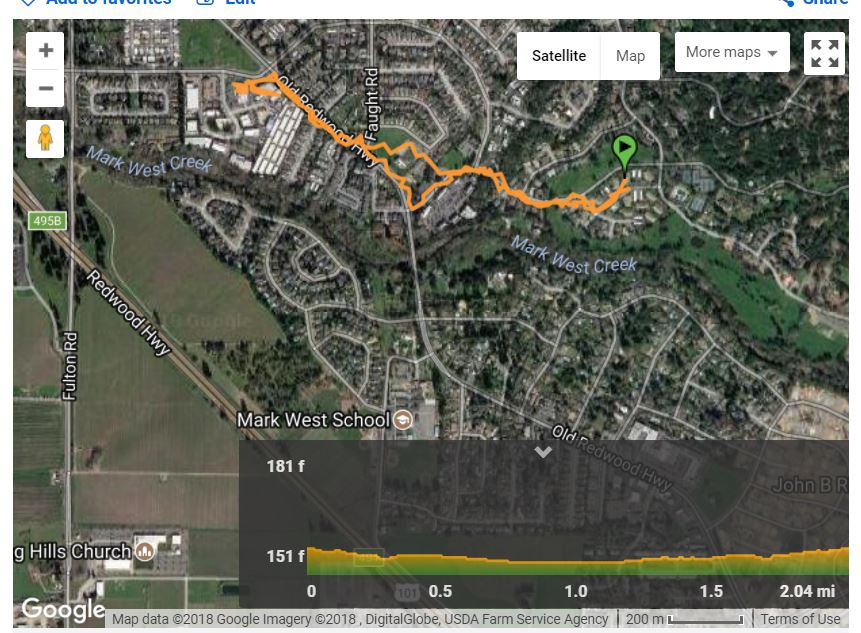Yesterday, after just six months, I received the license plates to my “new” used car from DMV. Raring to go due to the 40 mg of steroids I took earlier in the day, I decided to walk to the local hardware store for some screws. That turned out to be a record new walk — 2.04 miles according to the GPS tracker on my phone:

So I’m moving on up in the distance category. Now I need to work on improving on the 49 foot elevation gain.
After getting the screws I went to the Barry’s Market to get a fountain Diet Pepsi. The charge came to $1.41 and I gave the checker — a man seemingly in his late 20s — a five-dollar bill. He dutifully worked the till and it computed that he owed me $3.59 in change. Not wanting four more pennies, I gave him a penny from my pocket. This flummoxed him; I explained that he could just give me $3.60 cents in change now. “I can’t do that, the amount in my register won’t be right at the end of the day.” “It will,” I explained, “since I’m giving you an extra penny and you’re giving me an extra penny.”
This clearly didn’t compute for him, and seemed to piss him off. “This is my job, you know.” I fought back the urge to say something unkind (like “why don’t you know how to do it, then?”) and instead said, “No problem, I understand.” But in the end he took my penny and gave me $3.60 in change, figuring either that I didn’t look like the type that would try to screw him out of a penny, or that a one-cent error in his register wouldn’t get him fired.
But this made me realize that many cashiers these days simply don’t know how to deal with change, something that I could do as a 16-year old clerk back at the Witte Drug Store (my time there being deserving of its own post). Our tills didn’t compute back then, they simply gave the total owed by the customer; the clerk had the job of calculating the correct change.
This wasn’t difficult — you simply started at the cost and “counted up” to the amount the customer gave you. So in my case above (a $1.41 purchase and $5.00 rendered), you’d count up from $1.41 to $5.00 — 4 cents to get from $1.41 to $1.45; a nickel to get from $1.45 to $1.50; two quarters to get from $1.50 to $2.00, and three dollar bills to get from $2.00 to $5.00. A piece of cake.
But what if the customer wanted to avoid the four pennies? Easy — you just reduced the price by the “extra” amount given by the customer, and count-up from the lower price. In my case above, by counting up to $5.00 from $1.40.
Every clerk could accomplish these things back in the day. On one level, I understand why nowadays a clerk looking at a screen that says the change is $1.39 would balk at being given a penny an asked to return change of $1.40. On another level, it’s pure mathematical ignorance — you owe me $1.39, I gave you an extra penny, $1.39 plus $0.01 equals $1.40, give me $1.40. How hard can it be for Berry’s Market and other convenience stores to teach this simple trick?
This concludes my rant of the day.
Categories: Blogging
